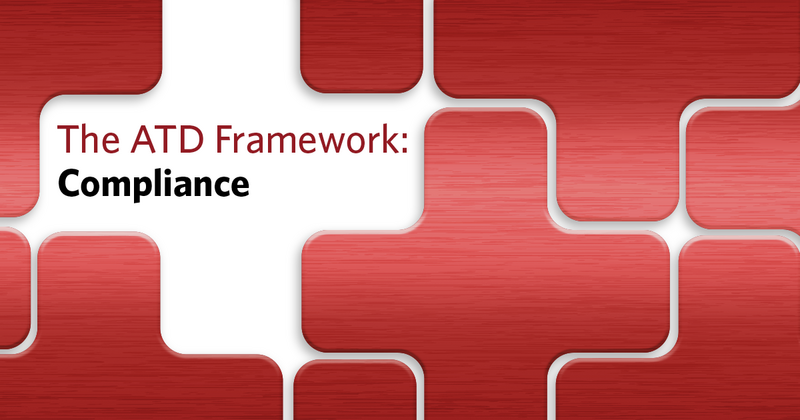ATD Blog
The ATD Talent Development Framework: Compliance
Fri Aug 05 2016

ATD developed the talent development framework and puzzle to help practitioners understand the different components of talent development, and how organizations can build their own frameworks to address their unique needs. This blog series explores each component of the talent development framework, why it’s important to the field, and what resources ATD offers to practitioners who want to learn more.
Compliance
Compliance is adhering to mandatory workplace regulatory training as required by law or professional governing standards. Different from other learning initiatives through talent development, it is not need-based. Rather, it is mandatory, and if it is ignored or done improperly it can result in fines levied against an organization.
Compliance training is often not given the same focus and design as other learning programs. With an aim to “check the box” and move as quickly as possible through compliance learning to get to a “better topic,” opportunities can be missed to enrich the learning experience and drive more impact. Compliance training is necessary in many environments, and making it part of a broader learning culture achieves better results for the workforce and the organization.
To build effective compliance programs, it is important to understand the law and the audience. Going to the source of regulations may uncover surprising information. Providing context for why the training matters helps workers better learn and retain knowledge. Additionally, understanding the learning audience is important. The same regulation may be presented differently in two organizations. Travis Waugh provides insight into why this matters, saying, “If you are creating a required sexual harassment course, your learner needs might be very different in an elementary school environment, where female teachers are typically more prevalent, than in the video game industry, where vastly outnumbered female workers may face real issues of inequality.” Understanding the audience and the environment in which they work will engage learners better and bring real change.
Spending appropriate time and resources on compliance training may be the difference between a group of rule-following employees and a motivated and committed team.

We’ve assembled some additional resources to explore:
• Learn about the effectiveness of compliance training through e-learning.
• Connect your compliance culture with your learning culture for more effective development.
• Foster an environment of commitment before compliance.
• Distinguish between rules and ethics to foster open-minded compliance.
• Focus on compliance e-learning with an online course.
• Improve your e-learning compliance program.
• Read Safety Training That Transfers.
• For more information on training delivery and other major components of talent development, check out the ASTD Handbook, 2nd Edition.
